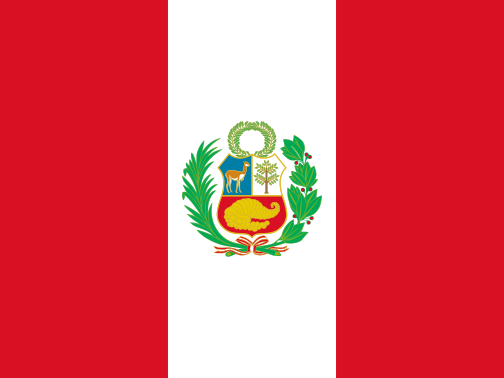
Peru
Political instability, protests, and polarisation are the greatest threats to freedom of the press and journalists in a year that ended with a failed coup by former President Pedro Castillo.
It feels like the turmoil in Peru never stops. A year after an extremely close election, the opposition-controlled Congress tried repeatedly to oust the new president, Pedro Castillo, and his government. They were not short of opportunities – the government was inexperienced, largely inept, and rife with corruption.1
In December, as Congress was mounting its third impeachment attempt, President Castillo responded by attempting a ‘self-coup’. In a televised speech, echoing the way Alberto Fujimori dissolved Congress in 1992, Castillo said he was going to establish an emergency government, reorganise the judiciary, and call for a new constitution. However, where Fujimori’s self-coup had led to a decade-long dictatorship, Castillo’s – without the support of the military – fell flat. Congress ousted him that same afternoon, and he was imprisoned. The vice-president, Dina Ercilia Boluarte Zegarra, was duly sworn in by Congress as the new president, the first woman to hold the position in Peru’s 200 years of republican governments.
Although the transition was orderly and followed constitutional processes, its abruptness led Castillo supporters and critics of Congress to take to the streets in protest, demanding a general election. At the time of writing, 59 people had died as a result of police or army actions. More than a hundred police were injured. Several independent investigations, including some by foreign press, found excessive force had been used by the police and military. One of the most useful tools in these investigations is the availability of videos of police and army actions, filmed by protesters on their phones and uploaded or streamed to social media.
The Economist downgraded Peru from a ‘flawed democracy’ to a ‘hybrid (authoritarian) regime’ in its 2022 Democracy Index,2 citing an ‘increasingly unstable political environment’.
The mainstream press, which is mostly opposed to Castillo’s government, supported Boluarte’s administration, which moved away from the left and aligned itself with conservative parties, seeking to protect markets and preserve the economic model which has been the status quo in the country for the past two decades.
Peru was very badly hit by COVID-19, and the slowness of the economic recovery is worrying for media companies. Advertising spend reached 0.23% of GDP, far below the levels of 2017 (0.31%). Broadcast TV still takes the largest share but the trend is steadily in decline (45.8% in 2018 vs. 38.3% in 2022).3
There are other reasons to worry – not least the overall decline in news audiences. All the most important sources of news (online, TV, print, and social media) showed declines of between 4% and 7%. Two newspapers which lost more than most were influential political tabloid Perú21 and the country’s oldest newspaper El Comercio, which lost 4% and 5% in print readership and 5% and 7% in online readership respectively. The trend might explain why El Comercio Group – which owns 80% of print media in Peru – sold Perú 21 to its news director, Cecilia Valenzuela Valencia.
Digitally native publications which had been gaining ground in the past few years seemed to become stagnant or even lose audience. Two exceptions are worth mentioning: Willax TV and Exitosa maintained their audiences year-on-year (20%). They come from the opposite extreme ends of the political spectrum: Willax is a right-wing TV channel which was accused of broadcasting fake news over the post-self-coup riots; Exitosa, a radio and TV operation, is known for its left-wing populism.
Online newspaper Infobae.com, one of the world’s most visited Spanish-language news sites, formalised its presence in Peru by joining the Peruvian Press Council. It enters our study for the first time this year with 8% of participants saying they visited the site for news.
The year 2022 was also the ‘worst of the century’ for Peruvian journalists, according to the National Association of Journalists’ annual report,4 which reported a total of 303 incidents involving journalists. The most common were threats/harassment (36%) and verbal/physical attacks (34%), but also growing were the use of lawsuits to intimidate journalists (9%) and blocks on accessing public information (9%). Digital independent journalists bore the brunt of the attacks (43%) followed by TV journalists (32%). This is not surprising – 71% of participants in our study say that, very or quite often, they ‘see or hear people criticising journalists’.
Lourdes M. Cueva Chacón
San Diego State University
Changing media
There is an overall decline in news use. This includes traditional and online media as well as all sources of news including social media. TikTok is the only social media platform growing considerably as a source of news among Peruvians.
Pay for online news
13%
Trust in news overall
33%
(=) 33/46
Trust in news I use
37%
Overall trust in news (33%) has declined across the board, as has trust in individual brands, with state-run media consistently registering some of the biggest losses. The percentage of people who say they distrust the media is higher than in many other countries, suggesting a high degree of media polarisation.

